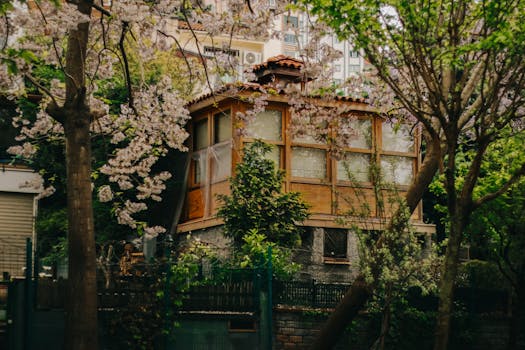
Urban Green Spaces: The Future of Outdoor Living in European Cities by 2025
Urban Green Spaces are the future of outdoor living in European cities, and it’s easy to see why. As the world becomes increasingly urbanized, the need for green spaces in cities is becoming more pressing. Not only do these spaces provide a tranquil escape from the hustle and bustle of city life, but they also play a critical role in maintaining the physical and mental health of urban residents.
Introduction to Urban Green Spaces
Urban green spaces refer to areas of vegetation, water, and other natural elements that are integrated into the urban environment. These spaces can take many forms, from parks and gardens to green roofs and walls, and even urban wetlands and forests. The importance of urban green spaces cannot be overstated, as they provide numerous benefits for both the environment and human health.
Benefits of Urban Green Spaces
So, what exactly are the benefits of urban green spaces? Here are just a few:
- Improved Air Quality: Urban green spaces help to purify the air by absorbing pollutants and particulate matter, making the air cleaner and healthier to breathe.
- Climate Regulation: Green spaces can help to regulate the urban microclimate, providing shade, cooling the air through evapotranspiration, and reducing the urban heat island effect.
- Mental Health Benefits: Spending time in nature has been shown to have a positive impact on mental health, reducing stress, anxiety, and depression.
- Increased Biodiversity: Urban green spaces provide habitats for urban wildlife, helping to maintain biodiversity and ecosystem services in cities.
- Recreation and Leisure: Green spaces provide opportunities for outdoor recreation, socialization, and community engagement, improving the overall quality of life for urban residents.
Case Studies: Successful Urban Green Space Projects in European Cities
So, what do successful urban green space projects look like in European cities? Here are a few examples:
- Paris, France: The Paris Green Belt, a network of parks, gardens, and green corridors that encircles the city, providing a green oasis for residents and visitors alike.
- Amsterdam, Netherlands: The Amsterdam Canal Ring, a UNESCO World Heritage Site, features numerous parks, gardens, and green spaces, making it one of the greenest cities in Europe.
- Berlin, Germany: The Tempelhofer Feld, a former airport turned public park, offers a unique urban green space with a range of recreational activities, community gardens, and cultural events.
Challenges and Opportunities for Urban Green Spaces in European Cities
While there are many benefits to urban green spaces, there are also challenges and opportunities to consider:
- Urban Sprawl and Land Use: The increasing demand for housing and urban development can lead to the destruction of natural habitats and green spaces.
- Climate Change and Extreme Weather Events: Urban green spaces can help mitigate the impacts of climate change, but they also require adaptation and resilience strategies to withstand extreme weather events.
- Community Engagement and Participation: Successful urban green space projects require community involvement, participation, and ownership to ensure their long-term sustainability and maintenance.
Conclusion: The Future of Urban Green Spaces in European Cities
In conclusion, urban green spaces are the future of outdoor living in European cities. As we look to 2025 and beyond, it’s essential to prioritize the creation, maintenance, and protection of these vital spaces. By doing so, we can create healthier, more sustainable, and more livable cities for generations to come.






